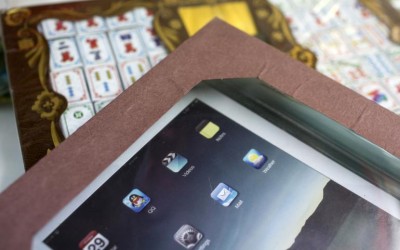The 13 Inch iPad To Replace The Mac

We just told you about Apple’s upcoming media event at the end of this month (on October 22nd), when the company will unveil the fifth generation iPad and the second generation iPad mini. However, while the fifth generation iPad will most likely be released with the same 9.7 inch display as its predecessor, there have been rumors suggesting Apple is prototyping bigger size displays for upcoming iPad tablets. According to an analyst, these large display tablets could replace Apple’s low budget notebook computers.
Ben Reitzes from Barclays Equity Research suggests that in the close future Apple will make a bigger, 13 inch iPad and he also says the companys’ newly unveiled 64 bit A7 System on Chip might have a big role in this transition from a 9.7 inch iPad to a 13 inch iPad. Yesterday, in a note to investors, Ben Reitzes wrote that 64 bit architecture could be integrated in a 13 inch version of the iPad thus replacing some of Apple’s notebook computers, such as the MacBook Air. “The whole iOS app ecosystem, extra-long battery life, ultraportability and user familiarity could be more compelling than a Mac if Apple made a true effort [...] And we believe a larger screened iPad would be a much better PC replacement than current tablets, including the Surface, and really be able to take on higher end tasks and start another wave of notebook cannibalization” said Ben Reitzes.
The Barclays Equity Research analyst believes that including a 64 bit System on Chip (the A7 SoC) in the iPhone 5S represents the beginning of a shift to 64 bit optimized iOS apps. He also says that 64 bit versions of iOS apps would be able to take advantage of the 4 GB of RAM capacity – a necessity for an iPad with a larger display. He continued saying that a 13 inch iPad might come with a Smart Cover with an included keyboard and track-pad and a battery for extra power supply. He thinks Apple could sell the tablet with a price tag ranging between $600 and $800.
Yesterday, we told you that Apple is rumored to hold a media event later this month, on October 22nd, a media event that will mark the official announcement of both the iPad 5 and the second generation iPad mini (which is said to have a Retina display). It is also rumored that at the October 22nd media event Apple will also debut the next version of its Mac operating system, OS X 10.9 Mavericks and the Mac Pro PC.
Impact On Apple’s Business
Reitzes thinks the 13 inch iPad could become Apple’s second revenue drivber after the iPhone line. Considering an average price of about $650 with a 34% margin, every ten million units of the 13 inch iPad sold will bring about 2 million dollars to the company’s earnings, per share.
And even though there is a high chance the 13 inch iPad would steal Mac’s market share (and it is already stagnating so it’s no hard to imagine such a scenario), Ben Reitzes thinks that Apple will be glad with the transition from Macs to 13 inch iPads, as the larger iPad might be responsible for 25 to 30 percent of the bigger notebook market. “Even though the products are still positioned at the high end of the market, both the Mac and iPads have really lost their growth profile to smartphones. We believe a convertible strategy could change that dynamic by attracting more of the consumer wallet again” concluded the Barclays Equity Research analyst.
A recent report indicates that while Apple shipped 17 million iPads during last year’s second quarter, this year the company shipped 2.4 million less iPads which means a 14.1 percent fall in iPads shipped. Apple’s market share dropped 27.9 percenatge points from last year, while in 2012 it dropped from 60.3 to 32.4 percent.
Samsung on the other hand, shipped 2.1 million units of Android based tablets during last year’s second quarter, and this year the South Korean company’s second quarter shipments increased to 8.1 million Android based tablets shipped. That accounts for a market share of 18 percent, which increased over the same period last year when Samsung’s market share was only 7.6 percent – as you see, Samsung more than doubled its market share from last year’s second quarter.










